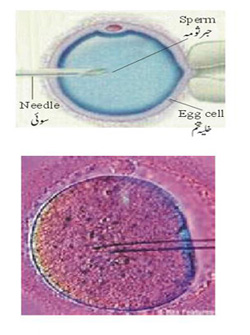ICSI is a technique in which a single spermatozoon is deposited directly into the cytoplasm of the oocyte. It revolutionized the treatment of male infertility; it allows men with little, or sometimes no sperm in their ejaculate to create a genetically related child. Number of sperms is immaterial for ICSI but motile normal sperm brings better results. Higher fertilization and pregnancy rates regardless of sperm characteristics make ICSI the best procedure yet to treat male factor infertility but in the last decade the use of ICSI has also increased for non-male factor infertility. ICSI is a laboratory procedure adopted when:
- Semen parameters are grossly abnormal; Low Sperm count, Poor progressive motility of sperms and Gross morphological abnormalities.
- Azoospermia, sperms are retrieved from Epididymis by MESA or PESA, or from Testes by TESE.
- Unexplained infertility
- Poor quality oocytes and/or low oocyte yield
- Advanced maternal age
- Prior fertilization failure with conventional insemination
- Pre genetic testing (PGT)
- After In Vitro Maturation (IVM)
- For fertilization of cryopreserved oocytes
ICSI is actually a method of insemination under overall technology of IVF. Under a high power microscope, the egg is held, and one sperm selected to be micro surgically introduced into an egg. This is done with sophisticated magnification and handling equipment. After 16-18 hours of sperm injection oocytes are analyzed for fertilization and embryos are placed in incubators until ready for transfer. The previous and the subsequent stages are the same as those of insemination (stimulation of ovaries, follicular aspiration and embryo transfer), only the insemination technique changes.
